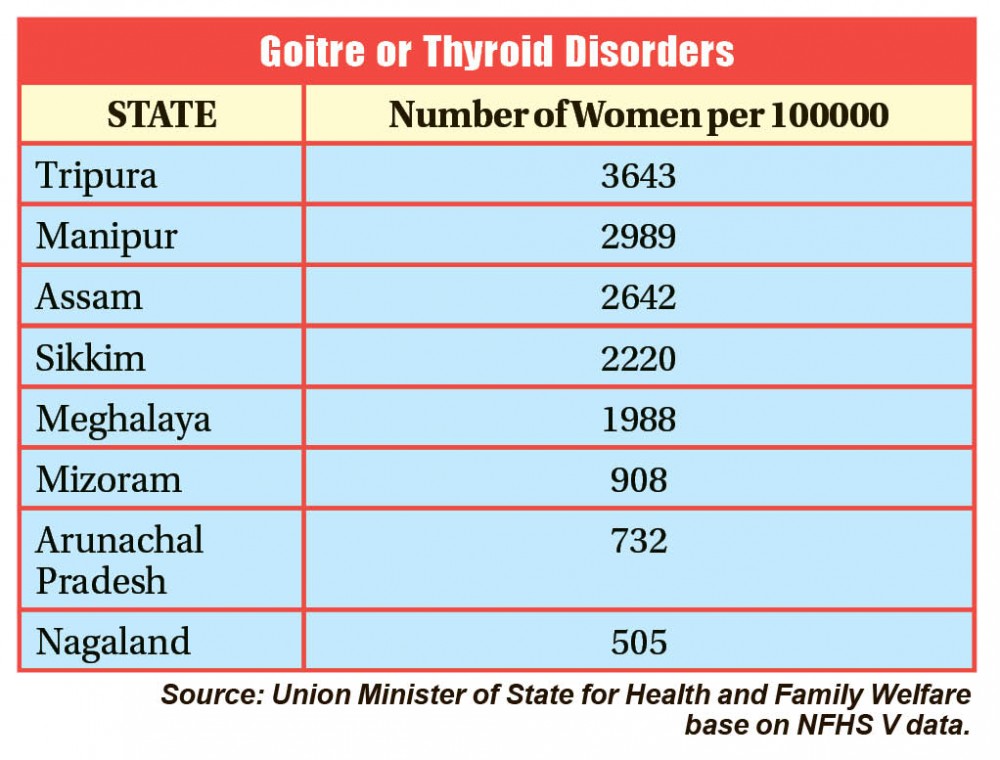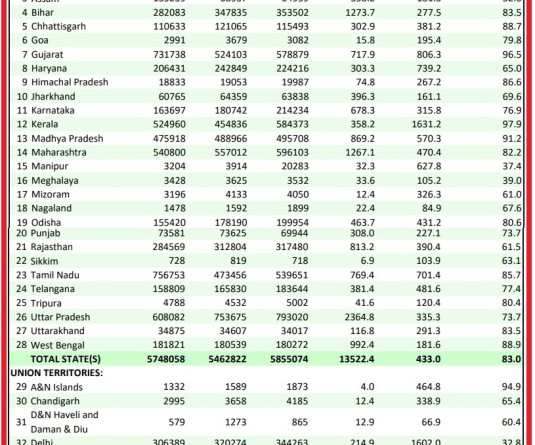
New Delhi, February 8 (MExN): At 505 per 1,00,000 women, the prevalence of Goitre or Thyroid Disorders is lowest in Nagaland, the Union Minister of State for Health and Family Welfare, Dr Bharati Pravin Pawar stated in a written reply in the Rajya Sabha on February 8.
The Minister of State's data was based on National Family Health Survey V (2019-2021).
Kerala has the highest prevalence at 8,696 per lakh women, followed by 6,809 in Jammu and Kashmir and 5,926 in Delhi NCT.
Among the North East states, Tripura had highest prevalence at 3543, followed by 2989 in Manipur and 2642 in Assam. (See Table)
After Nagaland, Arunachal Pradesh had the second lowest prevalence, while Mizoram was fourth lowest in India.
Meanwhile, Dr Bharati also informed that India has completed its transition from iodine deficiency to iodine replete status.
“It is believed that iodine supplementation can cause a spurt in autoimmune thyroid dysfunction and hypothyroidism, by making the thyroid gland more susceptible to damage by body’s own immune system,” she said.
The prevalence of self-reported goitre or thyroid disorder in NFHS IV (2015-2016) was 2.2%, while it was 2.9% in NFHS-V, she added.
The MoS also informed that the NFHS IV has reported that amongst individuals between the age 15-49 years, the self-reported prevalence of goitre or thyroid disorder was nearly 2% in females and less than 1% in males.
Also, the reported prevalence increased with age in women (15-19 years: 0.7%; 20-34 years: 1.8%; 35-49 years: 3.4%), she said.
As per the NFHS IV, amongst 6,99,686 women in their reproductive age groups (15- 49 years), those in the highest quintile of wealth index had three to four-fold higher risk of having thyroid disorders.
In addition, there was a graded increase in risk of having thyroid disorders from poorest to richest, she added.




